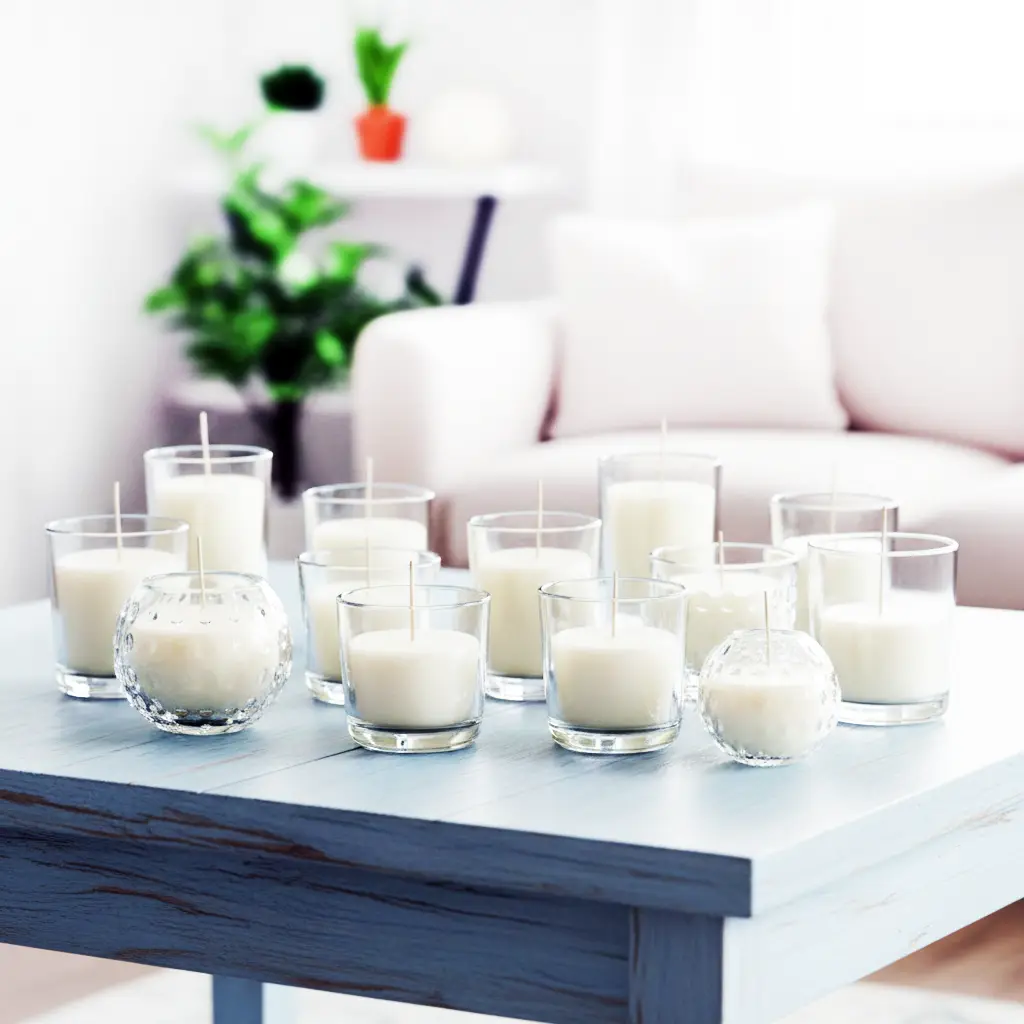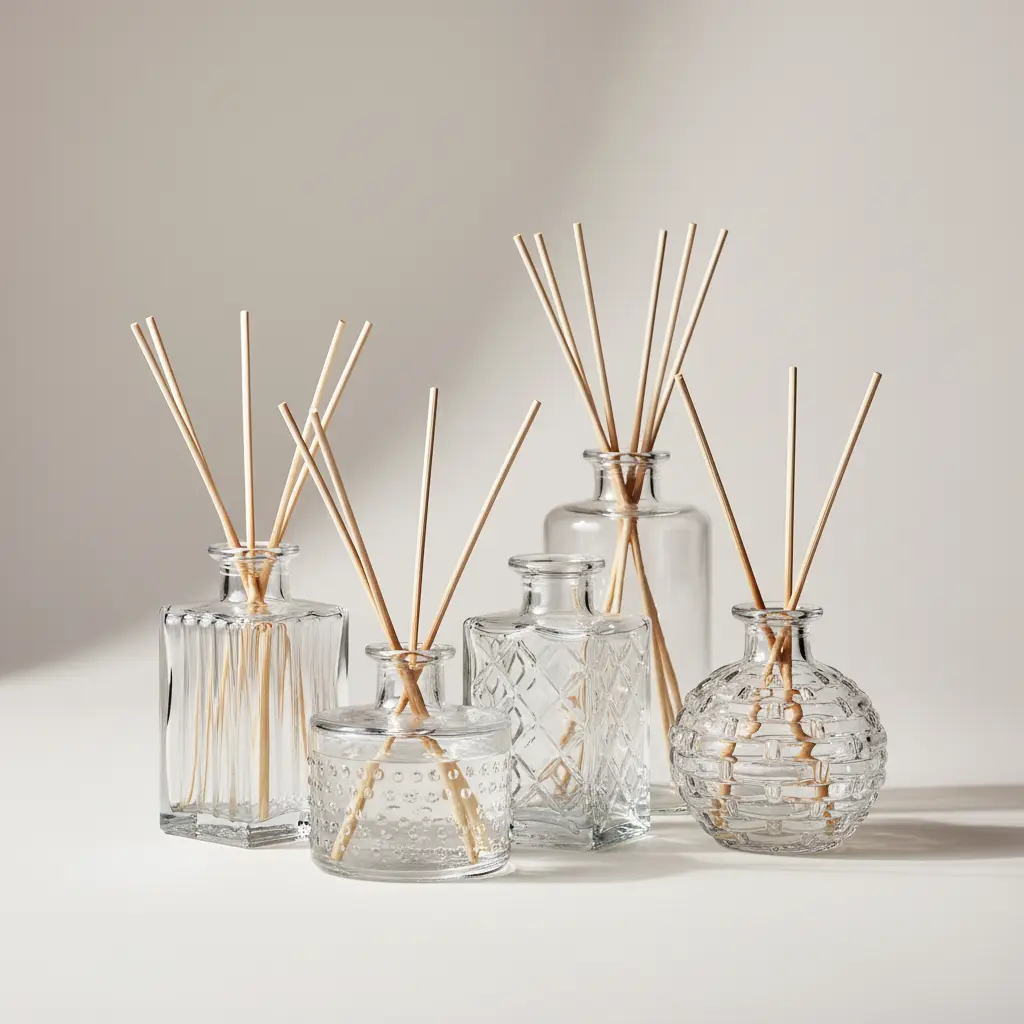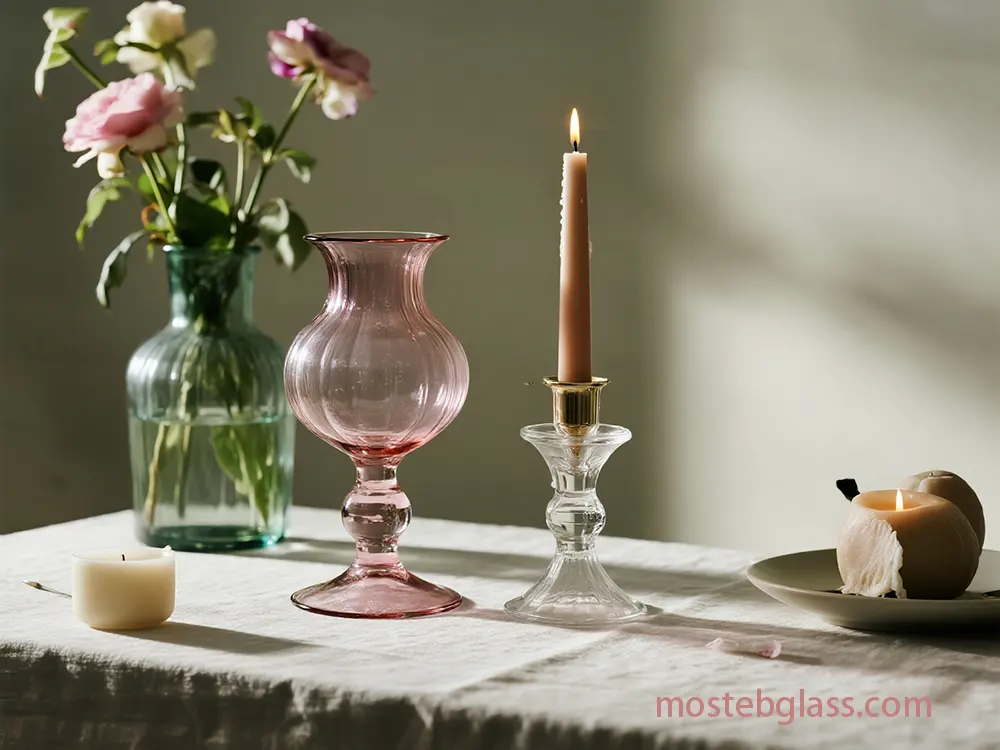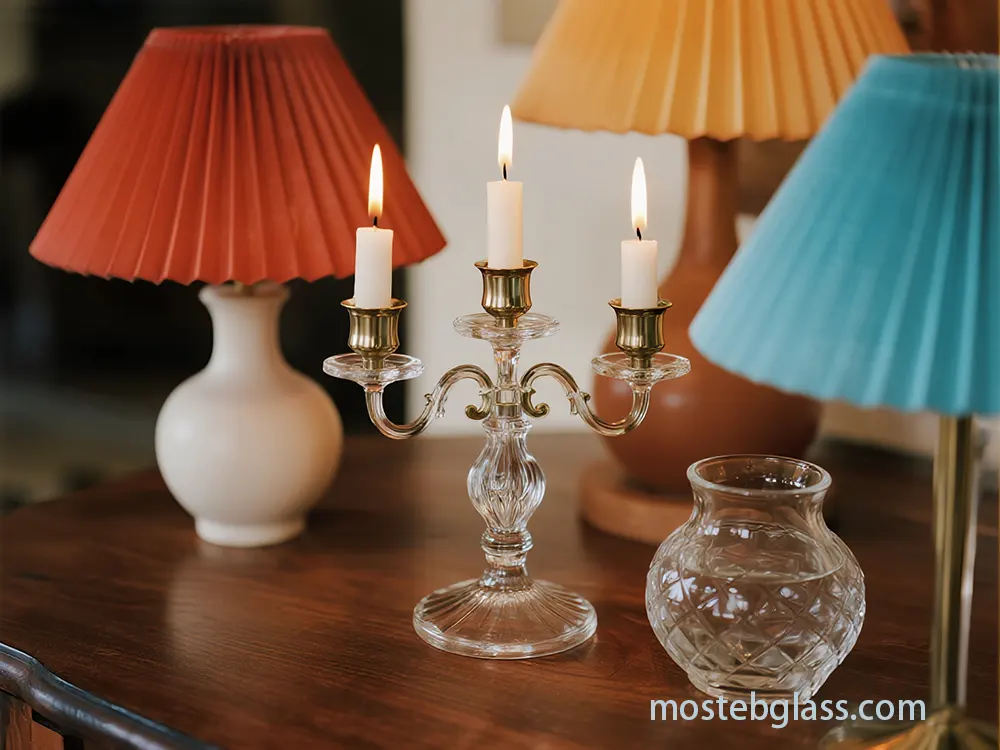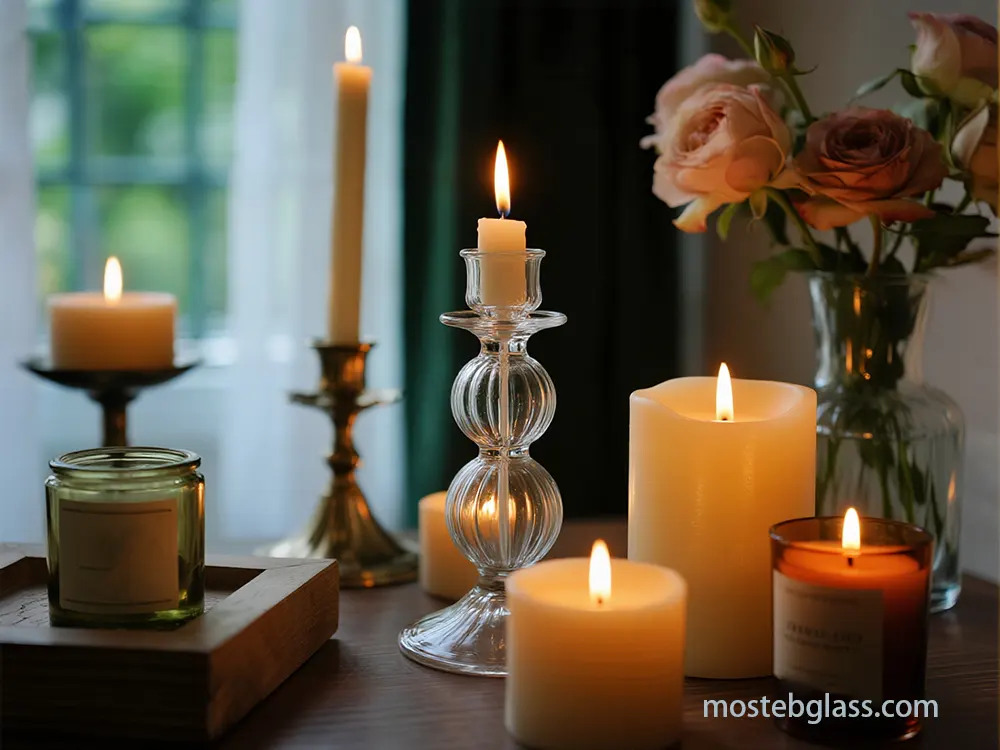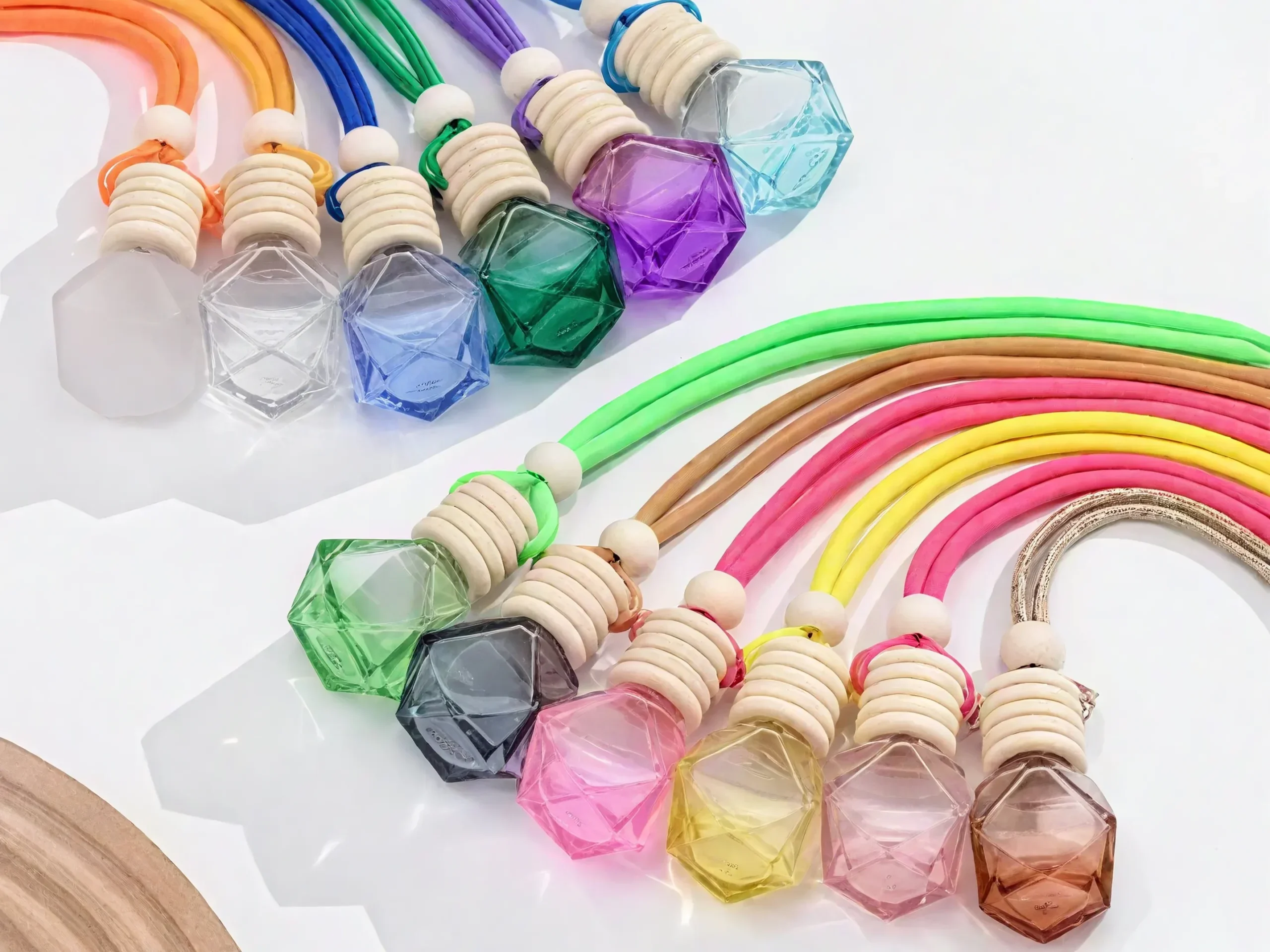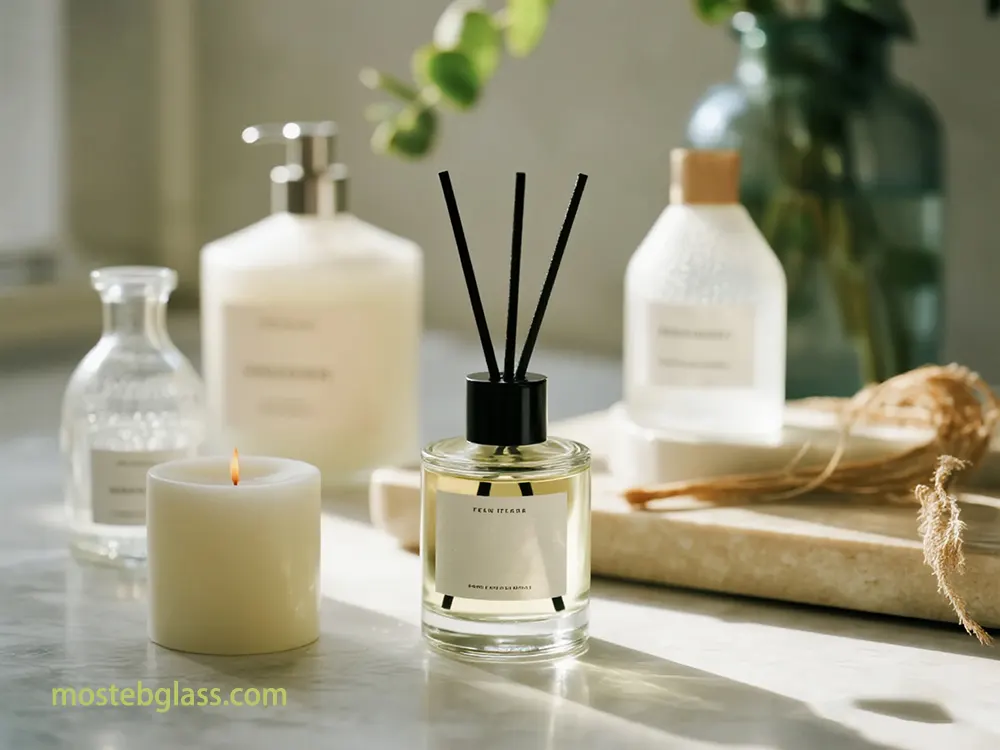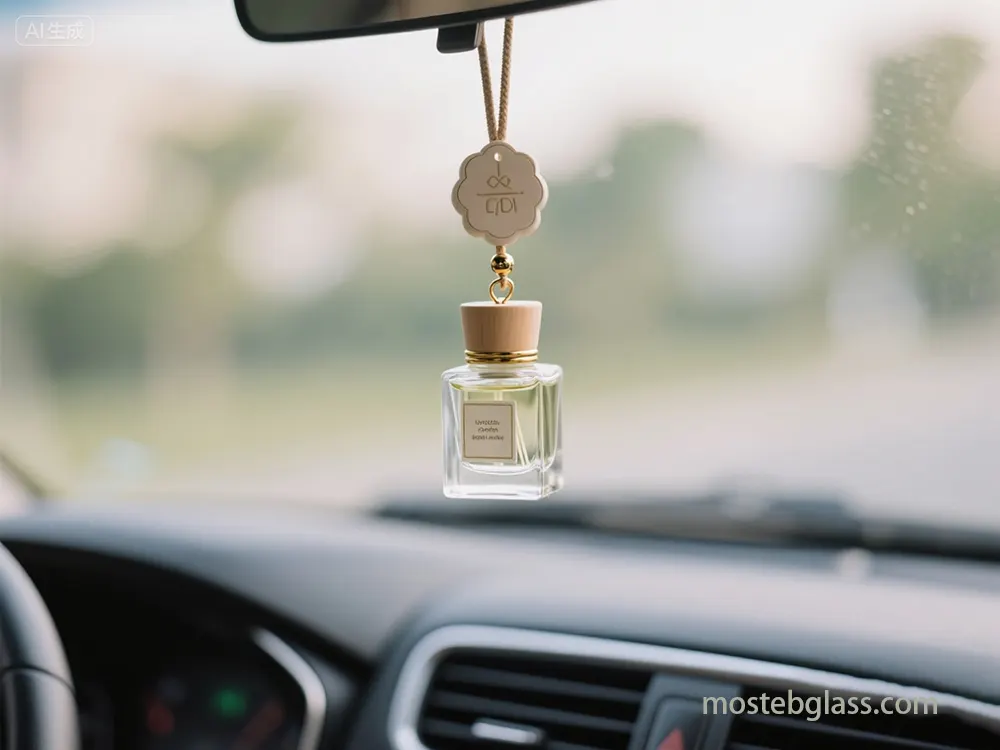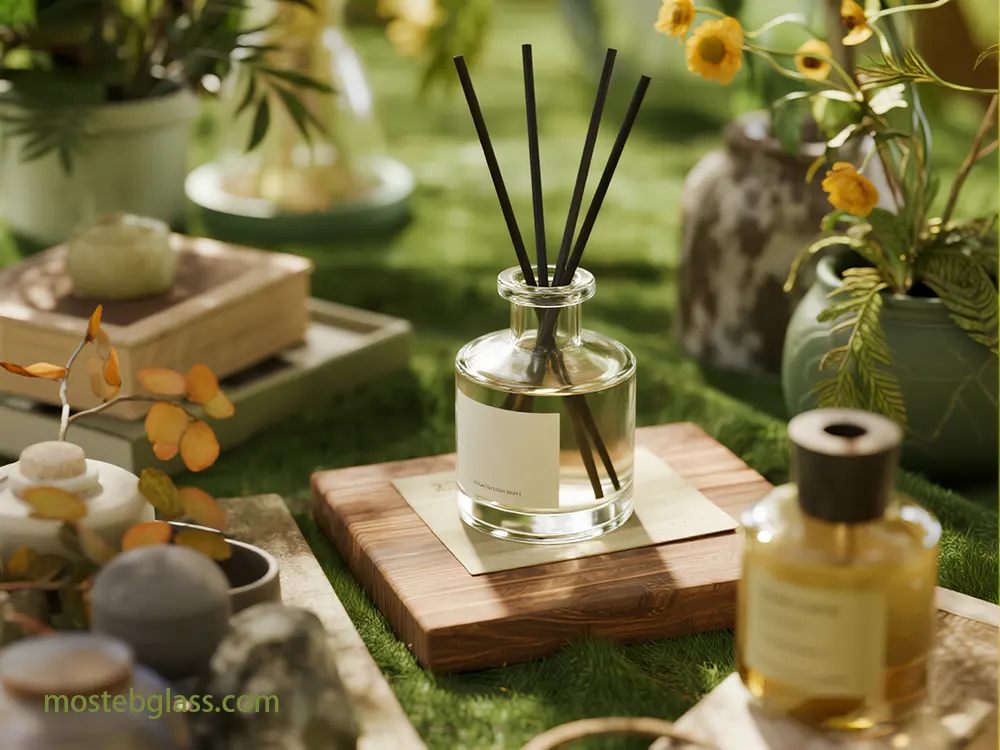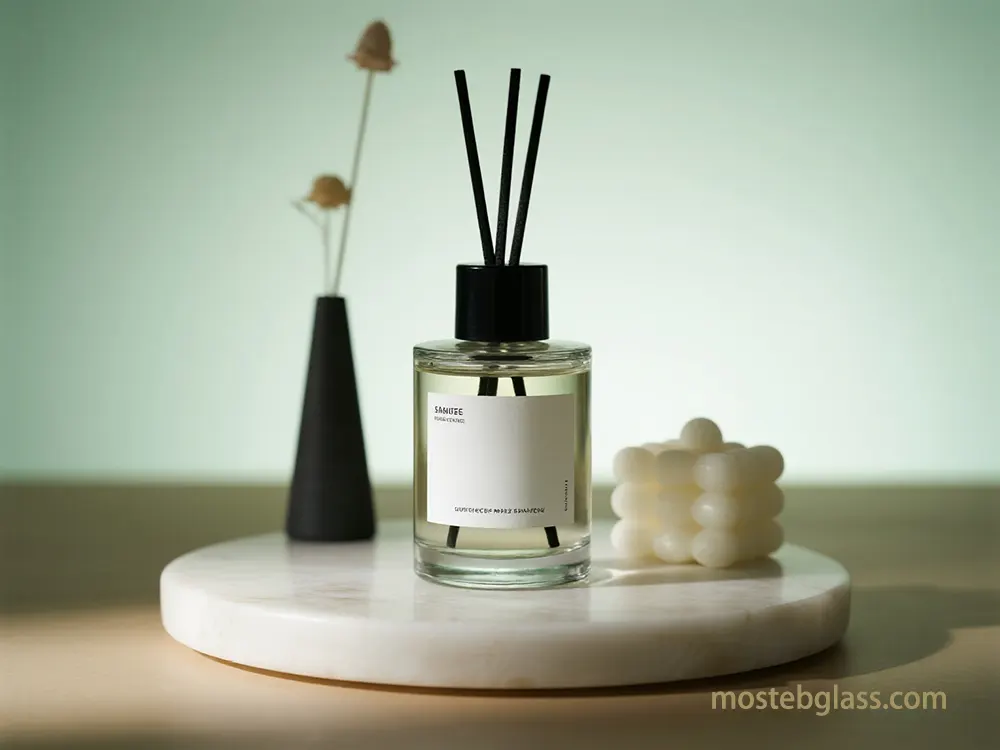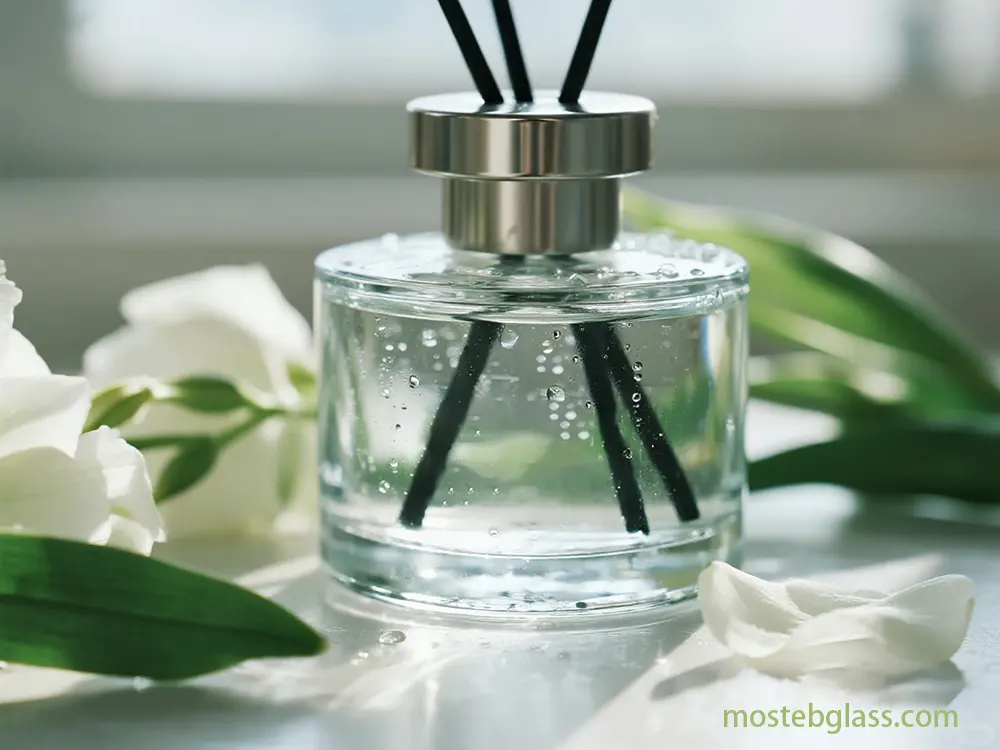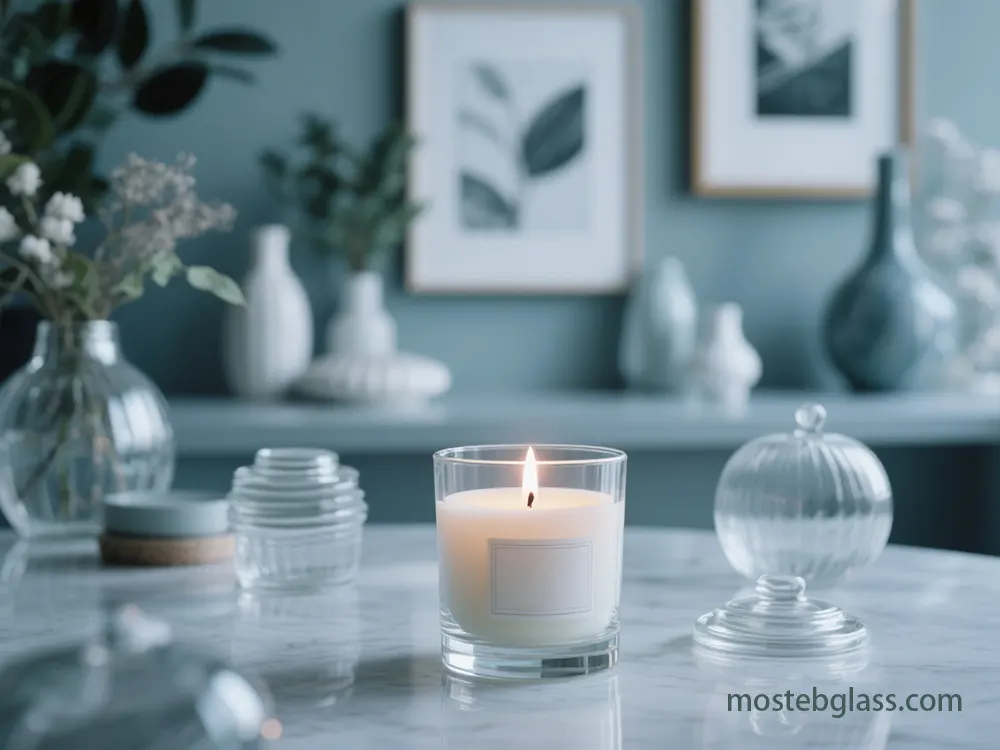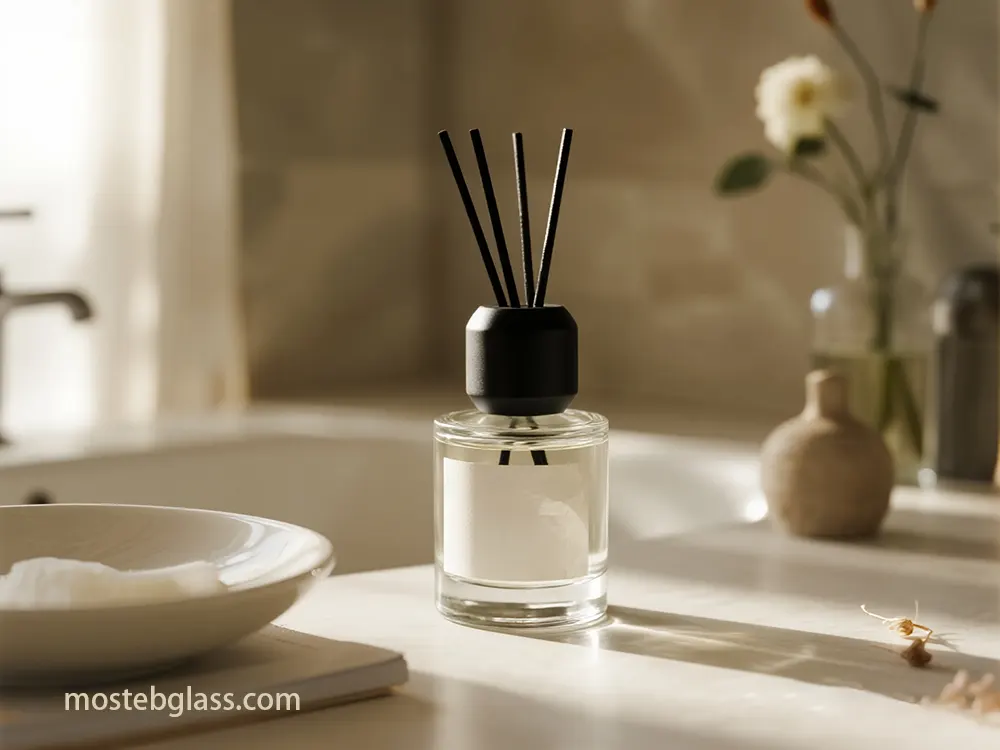1. Introduction: From Utility to Identity
Comment أوعية شموع زجاجية distributor has witnessed one of the key narrative shifts in the candle industry—the transition of the candle from a source of light to a symbol of personal identity, self-care, and curated home aesthetics. This shift reflects a culture that values the home as a space for self-expression. As a result, a leading distributor is not only a logistical link but also a vital force in defining new market trends. The demand for scented candles has risen to luxury status, with brands like Diptyque using storytelling to position them as chic lifestyle accessories, driving the entire category upscale—much like the Third Wave Coffee movement, where authenticity and quality define value.
Luxury home fragrance consumers are lifestyle advocates who care about ethics, environment, and quality of the make. The hunger for singular and responsible ways of consumption has thus become a fertile soil for brands with strong stories, which in turn has expanded the role of the distributor considerably. The latter are not only aware of these changes in the market, hence no longer merely facilitative agents, but instead, they have turned into proactive players for brand formation and trendsetting. By pinpointing consumers’ quests for identity and aesthetic matches, distributors can now become the architects of the new wave of iconic home fragrance brands characterizing the shift from merely supplying components to providing cultural experiences.
2. The Evolving Role of a Glass Candle Jars Distributor
The present-day distributor has taken a step away from his traditional role of merely facilitating the movement of goods to assuming the challenging portfolio of a brand architect, a move marked by financial and strategic benefits of creating own brands that alter significantly their position in the value chain.
2.1. The Strategic Shift to Private Label
Distributors are progressively switching to private label and brand incubation as a strategy to entice higher margins and market influence. The distributors in the beauty industry portray the image of “brand incubators” who along with creating their own labels, foster the growth of already established ones. The approach is extremely profitable; private-label items can deliver double the approximate gross margin of national brands. One industrial distributor in two years raised its gross margin from 35% to more than 40% by consolidating its private-label strategy, a move that needed not only the support of the executives but also that of the staff.
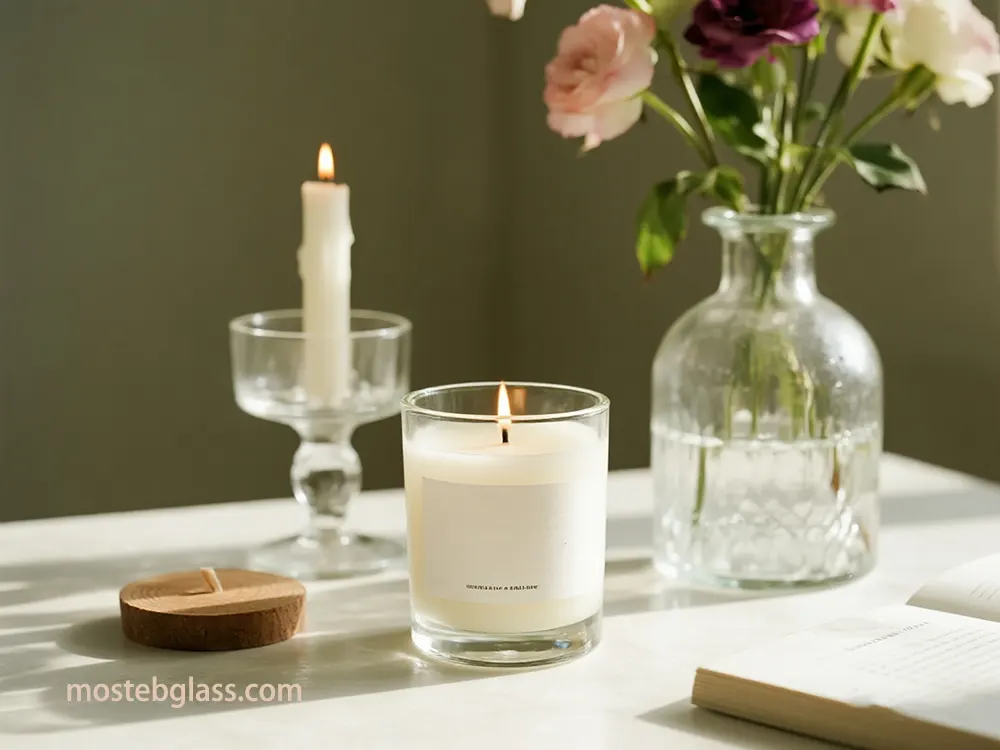
2.2. Value-Add Partnerships and Digital Transformation
Contemporary distributors like موستيب are not limited by the traditional functionalities of their profession and thus they add value to their operations beyond logistics. They take the digital leap by carrying out the implementation of data warehouses, CRM systems, and marketing automation that leads to better campaign effectiveness. Moreover, technology plays a vital role in omnichannel fulfillment. A beauty distributor Luxasia, for instance, leveraged an order management system to bring online 220 platforms across which 50 brands are functioning within eight months, thus showcasing how technology empowers the scale of the direct-to-consumer (DTC) initiatives.
2.3. Navigating the Risks of Brand Creation
Transition to brand creation is not without issues along the way. The major concern of channel conflict is the problem when a distributor’s private label which is in direct competition with the national brands they carry, becomes the cause of conflict between the two. This conflict, in turn, can lead to a weakening of the relationships with the partners in manufacturing. In order to help alleviate the problem, the most effective distributors put into practice clear channel strategies, open communication, and product differentiation elements, such as allowing exclusive products on certain channels to stay away from direct competition.
3. The Anatomy of a Lifestyle Object
One of the ways to descale the candle into a lifestyle accessory is a master design lesson, where the tangible flask blends with the brand storyline to develop a deep emotional connection.
3.1. The Physical Vessel as a Sensory Canvas
The source of the container is the very important preliminary measure in telling the brand’s story by the material used. Every material presents a different sensory experience:
- الفخار: It is very adaptable to glazing and different shapes, the weight of the product is of high quality and is suitable for reusing.
- Concrete: It is the perfect example of a minimalist, industrial style. Its significant weight and raw surface talk about long-lasting and grounded luxury that is extremely durable.
- الزجاج المعاد تدويره: Goes hand in hand with eco-friendly luxury. The imperfections in the product narrate the story of environmental respect, and the option for reuse makes it even more valuable.
- Jesmonite: This “eco-resin” provides almost infinite artistic options and allows distinctive vessels with terrazzo and marbling effects.
3.2. The Power of Haptic Branding and the Unboxing Experience
How consumers touch and feel a product – haptic branding – influences their sense of ownership and value. Packaging that appeals to the sense of touch can be a decisive factor in buying a product.This is also true for the vessel; the satisfying weight of a concrete jar or the smooth coolness of ceramic can create a perception of premium quality even without the light of the candle.
4. The Go-to-Market Playbook: From Concept to Counter
The creation of a distributor-led brand that is successful demands an advanced go-to-market playbook which integrates fiscal planning, artist collaborations, and a multi-channel sales strategy.
4.1. Financial Foundations and Pricing Strategy
Knowing unit economics is very important. A typical industry formula is to multiply the Cost of Goods Sold (COGS) by three to get the wholesale price, then multiply the wholesale price by two to get the retail price.The wholesale price of the candle that costs $6 to produce would be $18, and the retail price would be $36. Candles for luxury use could be sold at a price ranging from $40 to $70, which can be explained by the superiority of the branding, while niche fragrance brands, on the other hand, can have gross margin percentages as high as 70-85%.

4.2. Launching the Brand with a Glass Candle Jars Distributor
Contemporary trade fairs such as Shoppe Object and Maison&Objet are vital brand-building platforms with integrated e-commerce for constant engagement throughout the year.A week before the event, buyers start extensive brand research, therefore being market-ready and having an authentic story to tell is extremely important.At the same time, a “digital-first” launch is equally important. Ralph Lauren Fragrances has hugely benefited from this strategy as it recorded over 835 million impressions by using influencers and immersive experiences.The brand acknowledges that influencer marketing can give a 5x to 10x ROI and that creative mailers can become viral very quickly on platforms like TikTok.
4.3. Securing Placement: A Hybrid Channel Strategy
The best plan for distribution is usually a well-balanced, hybrid plan. The majority of niche brands that are successful set 50/50 as their goal for direct-to-consumer (DTC) sales and strategic wholesale partnerships.Most brands prefer DTC for higher margins, however, the presence at luxury boutiques can offer not only vital brand validation but also an increase of potential customers. Achieving this means, among other things, establishing sturdy relationships with retail buyers, which are most likely to be initiated at trade shows.
5. Case Studies: Blueprints for Success
By breaking down the strategies used by Boy Smells, B.D. & Durga, and Byredo, one can identify very different ways of branding to become recognized as a trendsetter of the home fragrance market.
5.1. Boy Smells: The "Genderful" Disruptor
After the foundation of 2016, Boy Smells turned away from “gender-neutral” and opted instead for a “genderful” one, embracing the whole range of identity. This is the principle that guides not only their aromas which combine traditionally male and female notes but also their graphic design which in a subversive way employs the pink color to provoke gender expectations. Their hybrid distribution strategy, elevating from boutiques to a key collaboration with Nordstrom, has been instrumental in their wholesale activities that have been growing year-over-year at a rate of more than 300% and their DTC sales that have increased by 4.5 times since 2019.
5.2. D.S. & Durga: Artisanal Storytelling
The brand of D.S. & Durga, created in 2008, is based on “perfume designer owned” authenticity.Their main weapon is the production of the complex, narrative-driven scents that take their inspiration from history, music, and literature.The brand story, first and foremost, is the approach that most welcomes in-depth-seekers. The 2024 purchase of the brand by Manzanita Capital (owner of Diptyque) is a sign of the brand’s willingness to expand its target market, supported by its great ability to attract growth through full-price digital marketing rather than discounting.
5.3. Byredo: Emotional Minimalism and Strategic Diversification
Byredo, launched in 2006, is on its way to becoming a worldwide luxury giant thanks to emotional storytelling that is translated into minimalist, gender-neutral scents. The brand was taken over by Puig in 2022 for a price that is thought to be around one billion euros. What is behind the brand’s success is the compelling emotional storytelling combined with the inclusive aesthetic that is attractive to both Gen-Z and millennials. Their Instagram, characterized as “editorial” style, serves as a digital art journal rather than a sales channel.Byredo has moreover carefully planned to branch out in the makeup and leather goods sectors and thus become a complete luxury lifestyle brand.
6. Horizon Scanning: The Next Generation of Home Fragrance
Three factors: technology, sustainability, and innovative business models that put personalization first are reshaping the future of home fragrance.
6.1. Technology and Personalization at Scale
Innovative technology is allowing for an unprecedented level of fragrance personalization. Intelligent and AI-based smart diffusers introduced by Pura and Airzai are offering customization that is phone-controlled, they can adjust to user likes, and in a way that is friendly to luxury perfume companies, they provide expansive scent libraries.This union of scent with the smart home ecosystem is a confirmation that the future of ambient scent will be one in which it is not only dynamic and reactive but also an integral part of our surroundings.

6.2. Sustainable Systems and Material Innovation
One important change in the industry is that it is going green by choosing refillable systems. Many of the candle-makers like Good Chemistry and Everly have started giving their consumers not only the possibility of refilling the candles but supplying with biodegradable waxes and packaging that is compostable as well.The NOTES® Candle Refill System utilizes natural wax beads and reusable glass vessels in order to decrease waste from landfills.Emphasizing circular economy and durable vessels are the main steps in product life cycle design from which changes come.
6.3. The Rise of "Scent-as-a-Service"
Models of the business are moving gradually from single transaction types of sales to those involving recurring accounts of gains. In this respect, a typical example is the subscription service Aroma360 diffuser pods, through which customers get a continuous supply of scent and thus their loyalty to the company is secured.The direction of this trend also involves customization whereby the startup called Scent Lab provides a solution for users to come up with their candles by choosing from already made vessels and fragrances.These businesses turn the once done and dusted market of fragrance into an updated, client-centered, service-based format that is ongoing.
7. Conclusion: The Distributor as Cultural Curator
The candle’s transformation to a complex signifier of identity points to a very fundamental change in the market fundamentally. In this new “aesthetic economy,” the distributors, who had only a logistical role, have become cultural curators with great influence. They are not only fulfilling the demand of consumers; they are, in fact, creating it.
By means of brand incubation and targetting, distributors have become “infomediaries” who manipulate taste and set lifestyle aesthetics. They are no longer just distributing products when they create private labels; they become the authors of the cultural narratives. By putting money in digital platforms and studying consumer data, they make use of algorithmic curation to lead the consumer to the right choice.This change has the distributor as its main character: the distributor who was the invisible intermediary is now the brand architect a cultural curator, a person who, by means of simple objects, makes the transformation into symbols of a well-lived life.
